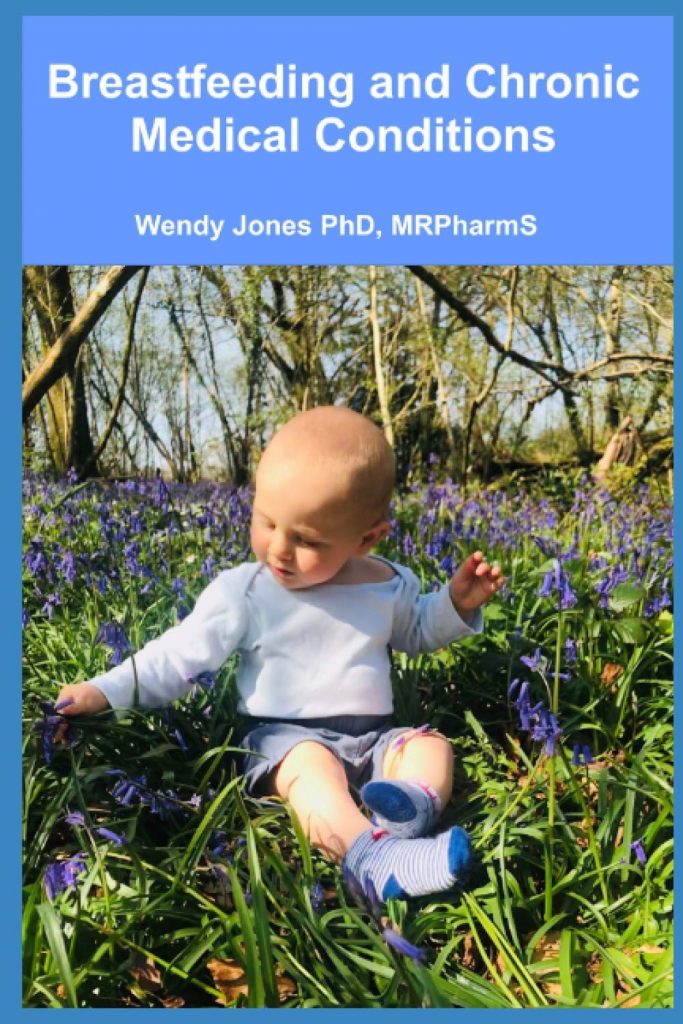Raynaud’s phenomenon affects up to 10% of otherwise healthy women aged 21-50 years of age. It is 9 times more common in women than men.
Yet many doctors are unaware that Raynaud’s can affect breastfeeding. It produces deep pain after feeds with a mother often automatically covering her nipples or massaging them to restore the blood flow. Symptoms are often mis-diagnosed as thrush when in fact the use of fluconazole can make the symptoms worse by causing further vasoconstriction.
Most mothers who experience problems with Raynaud’s during breastfeeding, have a history of cold hands and feet or a close relative who has. It may be that in a family it is routine to wear thick socks and gloves, maybe a vest without realising that they may be “unusual” in their response to the cold.
Babies of mothers with Raynaud’s may be born early and / or smaller because of restriction of blood flow to the placenta. It is not uncommon for there to be a maternal (or close family) history of migraines.
Symptoms which differentiate Raynaud’s phenomenon with other causes of breast pain are:
- Pain in both breasts after feeds
- Pain which may be precipitated by being cold or for example going down the freezer aisle in a supermarket
- Rapid 3 colour change in the nipples after feeds

- Pain that is resolved by warmth or gentle massage
- A history or close family history of poor circulation
Treatment of Raynaud’s during breastfeeding
- Don’t ignore the fact that pain after breastfeeds may be due to less than perfect attachment of the baby at the breast. A white tip to the nipple after feeds is not the same as the tri colour change typical of Raynaud’s
- Nifedipine 30-60mg a day (either as 10-20mg three times a day or long acting dose once daily. The amount in breastmilk is too small to affect babies although it may give the mother hot flushes and / or headaches.
- The following extract is taken from Breastfeeding and Medication 2nd Ed to be published May 2018
- High doses of vitamin B6 (Newman 2012), magnesium (Smith 1960, Turlapaty Leppert1994), calcium (DiGiacomo 1989), fatty acids (Belch 1985) and fish oil supplementation (DiGiacomo 1989) have also been suggested but take a minimum of 6 weeks to be effective. Ginger 2000mg-4000mg daily. Capsules usually contain 500mg. It may also be beneficial to add ginger to your diet, to drink ginger tea, or to put a spoonful of ground ginger in your bathing water (Royal Free hospital www.royalfree.nhs.uk/pip_admin/docs/Raynaudsnatural_186.pdf)
Nifedipine
Nifedipine relaxes vascular smooth muscle and dilates coronary and peripheral arteries. It has activity in reducing blood pressure and in the treatment of Reynaud’s syndrome
Nifedipine is almost completely absorbed from the GI tract but undergoes extensive first-pass metabolism. It is up to 98% bound to plasma proteins. It is used to treat hypertension (Penny and Lewis 1989; Ehrenkranz et al. 1989) and also to improve circulation in Reynaud’s disease (cold extremities and nipple vasospasm) in doses up to 30 mg daily (Lawlor-Smith and Lawlor-Smith 1996; Garrison 2002; Anderson et al. 2004). Side effects for the mother include flushing and headache, which may limit its usefulness. It is present in breastmilk but in levels too small to be harmful and there have been no reports of adverse effects in babies (see Chapter 5).
In Taddio et al’s study (1996) of 21 women taking 40 mg daily the babies were estimated to be exposed to 0.1% of the maternal weight adjusted dose via breastmilk. Nifedipine is widely used to treat pre-eclampsia and eclampsia in the mother together with methyldopa or a beta blocker. Ehrenkranz et al. (1989) studied one woman who took 10, 20 or 30 mg three times daily on different days. Using the maximum dose transferred by the 30 mg regimen, the authors estimated that the baby would be exposed to the authors estimated that an exclusively breastfed infant would receive an estimated maximum of 7.5 µg per kilogramme of nifedipine daily. Its relative infant dose is quoted as 2.3–3.4% (Hale 2017 online access).
The BNF reports that the amount secreted into breastmilk is too small to be harmful but that manufacturer advises it should be avoided.
Compatible with breastfeeding.
References
- Anderson JE, Held N, Wright K, Raynaud’s phenomenon of the nipple: a treatable cause of painful breastfeeding, Pediatrics, 2004;113(4):e360–4.
- Ehrenkranz RA, Ackerman BA, Hulse JD, Nifedipine transfer into human milk, J Pediatr, 1989;114:478–80.
- Garrison CP, Nipple vasospasm, Raynaud’s syndrome, and nifedipine, J Hum Lact, 2002;18(4):382–5.
- Lawlor-Smith LS, Lawlor-Smith CL, Raynaud’s phenomenon of the nipple: a preventable cause of breastfeeding failure?, Med J Aust, 1996;166:448. Letter.
- Penny WJ, Lewis MJ, Nifedipine is excreted in human milk, Eur J Clin Pharmacol, 1989;36:427–8.
- Taddio A; Oskamp M; Ito S; Bryan H; Farine D; Ryan D; Koren G,. Is nifedipine use during labour and breastfeeding safe for the neonate?, Clin Invest Med, 1996;19(4 Suppl.):S11. Abstract.
- Quental C, Brito DB, Sobral J, Macedo AM. Raynaud Phenomenon of the Nipple: A Clinical Case Report. J Family Reprod Health. 2023 Jun;17(2):113-115. https://www.ncbi.nlm.nih.gov/pmc/articles/PMC10397528/pdf/JFRH-17-113.pdf
- Deniz S, Kural B. Nipple Vasospasm of Nursing Mothers. Breastfeed Med. 2023 Jun;18(6):494-498
- Di Como J, Tan S, Weaver M, Edmonson D, Gass JS. Nipple pain: Raynaud’s beyond fingers and toes. Breast J. 2020 Oct;26(10):2045-2047
